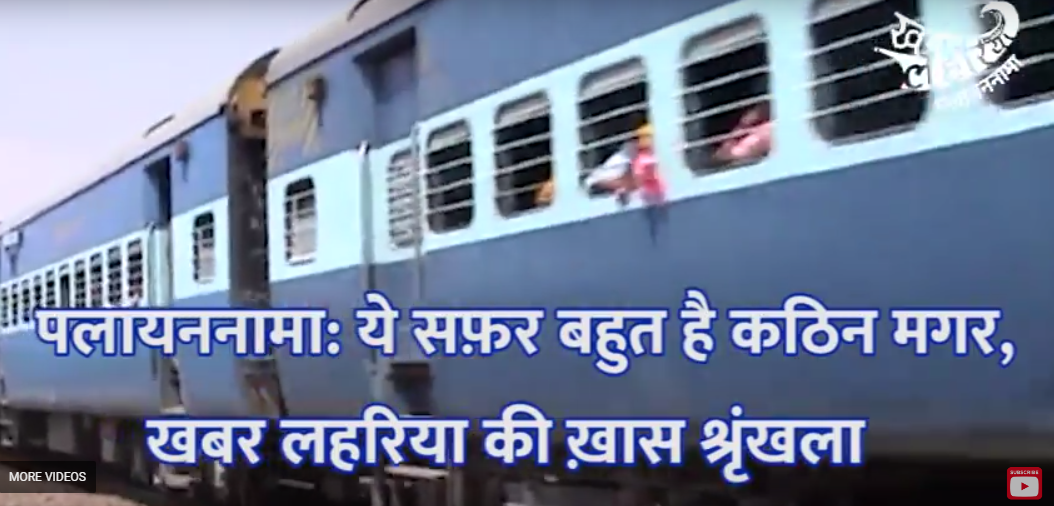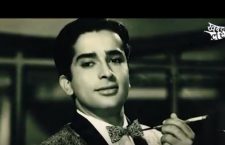Bundelkhand witnesses a spike in the sheer numbers of warm bodies migrating to cities, looking for greener pastures – Palayan Nama chronicles the story, in a special five-part video series.
“I remember when we would boss around the people working in our fields. And look at me now. All these Punjabi ladies bossing me around, complaining about the rotis I make!”
Kaushaliya Devi, a local of Mau Kasbah in Uttar Pradesh’s Chitrakoot district, is ranting about her new life – new only for the last 20 years. But there is something transient about migrating to a new place, a big city, from your village and kheti deep inside the innards of a country as vast as India – such that it makes people like Kaushaliya feel like she doesn’t completely belong.
She is not alone.
India, according to a report derived from a study by the International Organization for Migration, has the second highest number of adults in the midst of the migration cycle – that’s 3.5 million planning and 1.3 million preparing. Zoom in on Uttar Pradesh, home to the largest population in the country, and the numbers are mind-boggling. The 2011 Indian Census pegged U.P. as the state with the most out migration (26.9 lakh) followed, not so closely, by Bihar at 17.2 lakh.
In Bundelkhand, arguably among the most regressive swathes of land in U.P., migration is the norm – with generations upon generations of families opting for it, in order to survive. “Peedhiyon se palayan” is a common, oft-heard phrase around these parts, especially in the post-Diwali season, with the winters in the offing when hordes of men and women make their way to the Manikpur railway station, to catch trains to Delhi. The families of Bakta Bujurg village in the district of Chitrakoot for instance, often speak of “palayan” and “pardes”. Alpana Devi tells us that her husband Ramdeen left 10 years ago, while Ramdeen who is visiting, speaks of the reasons, “Our options are to work on land owner’s fields, for which we get INR 150 a day. We can either eat, or send our children to school; there is no way we can afford both.” Ramdeen’s father too had migrated, “for the same reasons”. And decades later, he says, it’s still the same, “I don’t see any other or new options that have come up since the time my father worked to bring us up.” What about his children? “What about them?”, Alpana asks us back, even as Ramdeen sums it up,”Yeh toh ab rivaaz hi ban gaya hai. (Migration has now become a tradition)”, watching his 10-year-old son play.
Migration as a socio-cultural-economic phenomenon in U.P. has been a steadily intensifying one. Between 2001 and 2011, over 5.8 million people between the ages of 20 and 29 migrated from the state in search of jobs, but the tragedy in this mass exodus lies not as much in the process of migration itself as in the outcome. The search for jobs and better opportunities pushes these migrants into the informal sector in cities like Delhi, Punjab, Chandigarh, sometimes Mumbai, where, due to low educational attainment, they are often forced to make-do with low-paying jobs. As a result of which, they are often relegated to settlements and clusters on the peripheries of the cities they’re in – entire families crammed in one room, sharing the common toilet with other families in neighbouring shanties. We visited Rajapur in Delhi, one such popular settlement for scores of migrating Bundelkhand families, especially from Mau, in Chitrakoot – where men work as drivers and car cleaners, women as cooks and maids, and the children dream of reality shows as they head out to the local government school. Arjun had dreamt of working in the wholesale business, but didn’t make the cut for “any company”. He currently cleans cars for a living and is aiming to be a driver, next. Kaushaliya Devi who cooks for a family in south Delhi, lists “gas chalana” as one of her biggest challenges initially, “I couldn’t figure out the knobs! Now I’m super-fast!” nagging women of the house continue to be the bane of her existence even though she adds, “I make tasty food. You know, these city people don’t really know to cook!” Chunki recalls her early days and relives the pangs of loss she felt in the moment she left Mau for Delhi. “Oh! I cried and I cried. I couldn’t understand this Delhi, and why I was here.” And Kumkum misses the buzz of festivals back home – “It’s just not the same here,” she smiles, wistfully.
But Kumkum hides other darker tragedies in her personal story of migration – one that reflects on an entire state and its defunct rural health system. According to an Indiaspend study, U.P. spends Rs 452 per capita on health, which is, on an average, 70% less than the others. And there’re more dismal figures here. There are 84% fewer specialists than needed, 50% fewer nursing staff, and the lowest share of health workers (19.9%) in India, as per an analysis conducted by the Observer Research Foundation in February 2017. The fact that T.B. continues to be a silent killer in Bundelkhand – as is clear in our reporting in Gopra, Banda – is just one illustration of the abysmal state the system is in. And this too is one of the big reasons for migration – the underbelly of a peculiar kind of medical tourism. “My husband had T.B.”, says Kumkum, “His condition was not improving. So we came to Delhi for his treatment.” As the treatment began, Kumkum, her husband, and their four kids, took up accommodation in Rajapur. The children got enrolled in sarkari schools and since “school admission is such a problem now”, the family decided to stay on in Delhi. Kumkum’s husband eventually got better and regained his strength, but Kumkum still dreams of her special Purnima puja back home, when “all the ladies would get together” and bond over a ritual – one that morphed into a ritual of exodus.

The U.P. Sampark Kranti that takes a chunk of Bundelkhand’s population to Delhi in search of jobs, has seen a significant rise in ticket sales
The greatest driver of the migration story of course remains and continues to be linked with livelihoods – the basic need to earn, eat, feed, fend for your loved ones – in short, survival. The celebrated MGNREGA policy, put into place by the UPA government, has not been the very picture of a success story. A recent Indiaspend study revealed the shocking fact on how wage payments under the MGNREGA scheme have been frozen at the Centre across 19 states, as of October 31, 2017. In U.P., these payments have been released and are pending since 11 September 2017, but that’s only official data. Add the Aadhaar card requirements and bank account linkages, and couple those with job cards-hoarding village headmen at the rural level, and there is a clearer picture of the sheer dystopia that a “poor-friendly” policy has become.
In the meanwhile, the migration story is deeply linked with the story of overall deterioration of the country’s most populous state – something is more than rotten in U.P., and specifically Bundelkhand. The proportion of households able to get 100 days of work, for instance, makes for another mind-boggling statistic, having decreased from 6% in 2013-14 to 2.13% in 2016-17. Figures it would do the current Yogi Adityanath government good to do some stock-taking on. The “sabka saath sabka vikaas” mantra is failing deeply in a place like Kabrai, for instance – a stone-mining haven in Mahoba where machines have replaced manual labour, which has in turn resulted in an acute employment crisis. Rajpal, who tried his luck with contracting in Kabrai, is now heading to Jaipur, to become part of the brick-laying unskilled labour force needed to construct, more malls, possibly. We asked his wife Sunita about the big move and her response is tempered with something close to rage, “What else can we do? There is nothing here that gives us money. Pet paalna hai, toh jaana hi hai.”
And unfortunately, that is exactly what the palayan narrative of Bundelkhand boils down to.

